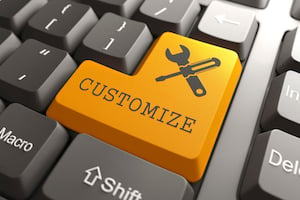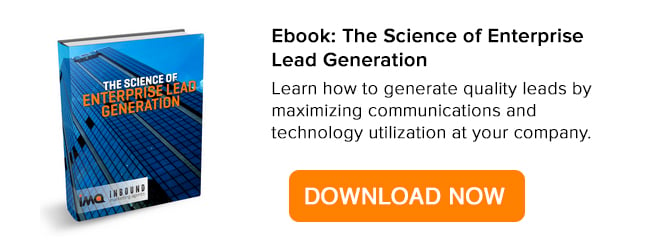 The latest in digital and inbound marketing focuses on providing a relevant experience for buyers, with personalization being the major buzzword. Marketing software that automates the process makes this personalization easy, especially when it comes to sending email offers or reaching out through social media.
The latest in digital and inbound marketing focuses on providing a relevant experience for buyers, with personalization being the major buzzword. Marketing software that automates the process makes this personalization easy, especially when it comes to sending email offers or reaching out through social media.
If people want relevant experiences, that’s exactly what you should give them, right? Well, if you’re not careful, you could overdo it and scare off some of those potential customers. It’s a fine line to walk, so just be sure you’re genuine and timely with your customized content. So, how do you know when to personalize and when to keep your message generic? Here are some pretty solid tips:
1) Incomplete Data
An email greeting a potential customer by name can be a very powerful tool, but your good intentions can turn bad in an instant if the salutation reads “Dear FIRST_NAME.” There is no faster way to let customers know you don’t actually know who they are other than a speck in your database.
An email without the proper name strips away that feeling of magic the buyer experiences, that feeling that they’ve found a company that really understands them and their needs. Therefore, if you’re not sure you’ve got complete information on each and every person in your contact list, don’t attempt personalization.
2) Third-Party Ads
If ever there’s a time to go generic, your marketing through AdSense and AdWords is that very time. In fact, if consumers think too closely about why that ad for floor tiles showed up on their chat forum about The Vampire Diaries, they’d get a little creeped out anyway. True, they were probably checking out floor tiles a few days ago, and their activity was logged through cookies and maybe even location targeting services.
They really don’t want to be reminded that their internet activity is being tracked, so don’t do something silly like showing them the exact floor tiles they searched. A general message with your company name reminding them to come back and visit your site is really all you need to get the point across. It’s much easier for the user to convince himself he’s not being watched.
3) Too Soon
All the data out there seems to suggest that personalization is the best way to build a relationship with potential buyers, but just like a real relationship, you don’t want to get too personal too soon. Letting on just how much you know about someone five minutes after meeting them is a good way to send them running for the hills—if they don’t karate chop you first.
The same is true when you’re beginning a tentative business relationship. Maybe you learned a lot about a potential buyer because she chose to register with your social login option—information like her address, her mom’s maiden name, and what kind of car she drives. If you use Signals by HubSpot, you’re always aware of who is reading your emails and clicking on your links.
CRM data also tells you how those potential buyers are interacting with certain pages on your website. Whatever you do, don’t let on that you know. If you send a message saying “I see you’ve shown interest in our pricing,” or “Aren’t you ready to trade that 2004 Honda Civic in for a new car?” you’re just going to look creepy.
To Personalize, or Not to Personalize?
Now, seeing these three reasons might just erase everything you thought you knew about customizing the buyer experience. After all, when you see research that says 74% of consumers get frustrated when the ads they see have nothing to do with their interests, you just might be tempted to target that third-party ad.

